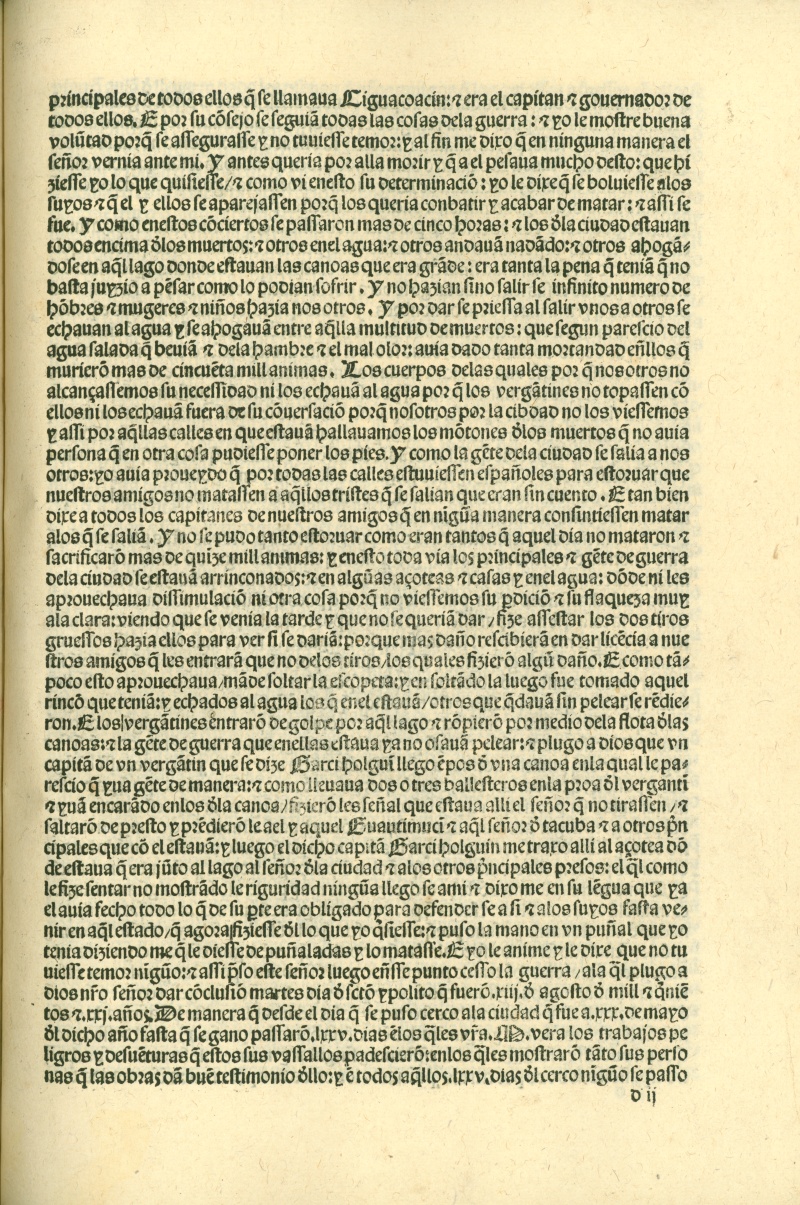Europeans Invade the Aztec Empire

Carta tercera de relación
Describing the last stages of the indigenous resistance in Tenochtitlan, Cortés confronted the human tragedy of the conquest. The conquistador was never able to predict or understand the Aztecs’ willingness to withstand misery, starvation, and massive deaths rather than surrender. Neither words nor the force of arms served him to persuade Cuauhtémoc, the last Aztec ruler, to submit to Spanish authority. How the world of the Indians was different from his was a question beyond his grasp.
Translation of transcription from Carta tercera de relación:
I welcomed him openly, so that he should not be afraid; but at last he told me that his sovereign would prefer to die where he was rather than on any account appear before me. . . . The people of the city had to walk upon their dead while others swam or drowned in the waters of that wide lake where they had their canoes; indeed, so great was their suffering that it was beyond our understanding how they could endure it. Countless numbers of men, women and children came out toward us, and in their eagerness to escape many were pushed into the water where they drowned amid that multitude of corpses; and it seemed that more than fifty thousand had perished from the salt water they had drunk, their hunger and the vile stench. So that we should not discover the plight which they were in, they dared neither throw these bodies into the water where the brigantines might find them nor throw them beyond their boundaries where the soldiers might see them; and so in those streets where they were, they came across such piles of the dead that we were forced to walk upon them (Translation by Anthony Pagden, Letters from Mexico, pp. 263-264)
Newberry Library: Ayer 655.51 .C8 1523